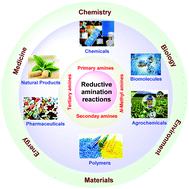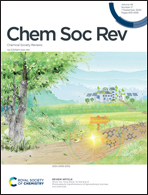Catalytic reductive aminations using molecular hydrogen for synthesis of different kinds of amines
Abstract
Reductive aminations constitute an important class of reactions widely applied in research laboratories and industries for the synthesis of amines as well as pharmaceuticals, agrochemicals and biomolecules. In particular, catalytic reductive aminations using molecular hydrogen are highly valued and essential for the cost-effective and sustainable production of different kinds of amines and their functionalization. These reactions couple easily accessible carbonyl compounds (aldehydes or ketones) with ammonia, amines or nitro compounds in the presence of suitable catalysts and hydrogen that enable the preparation of linear and branched primary, secondary and tertiary amines including N-methylamines and molecules used in life science applications. In general, amines represent valuable fine and bulk chemicals, which serve as key precursors and central intermediates for the synthesis of advanced chemicals, life science molecules, dyes and polymers. Noteworthily, amine functionalities are present in a large number of pharmaceuticals, agrochemicals and biomolecules, and play vital roles in the function of these active compounds. In general, reductive aminations are challenging processes, especially for the syntheses of primary amines, which often are non-selective and suffer from over-alkylation and reduction of carbonyl compounds to the corresponding alcohols. Hence, the development of suitable catalysts to perform these reactions in a highly efficient and selective manner is crucial and continues to be important and attracts scientific interest. In this regard, both homogeneous and heterogeneous catalysts have successfully been developed for these reactions to access various amines. There is a need for a comprehensive review on catalytic reductive aminations to discuss the potential catalysts used and applicability of this methodology in the preparation of different kinds of amines, which are of commercial, industrial and medicinal importance. Consequently, in this review we discuss catalytic reductive aminations using molecular hydrogen and their applications in the synthesis of functionalized and structurally diverse benzylic, heterocyclic and aliphatic primary, secondary and tertiary amines as well as N-methylamines and more complex drug targets. In addition, mechanisms of reductive aminations including selective formation of desired amine products as well as possible side reactions are emphasized. This review aims at the scientific communities working in the fields of organic synthesis, catalysis, and medicinal and biological chemistry.



 Please wait while we load your content...
Please wait while we load your content...